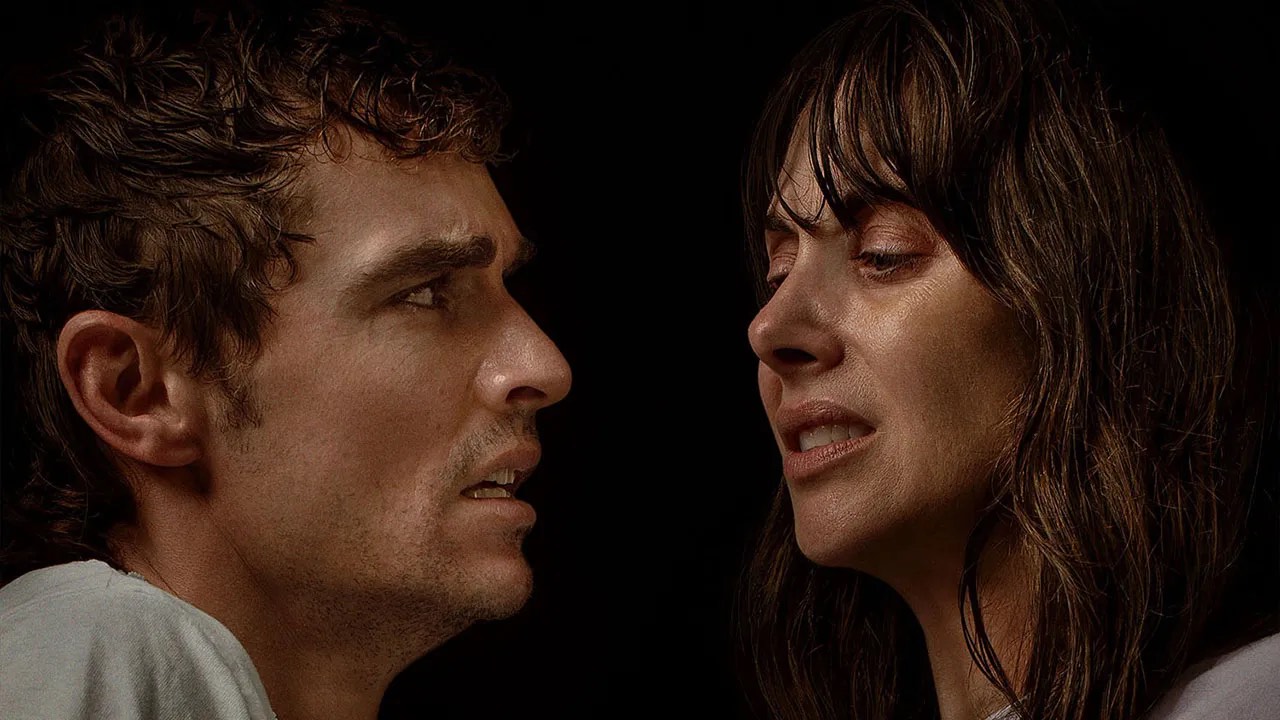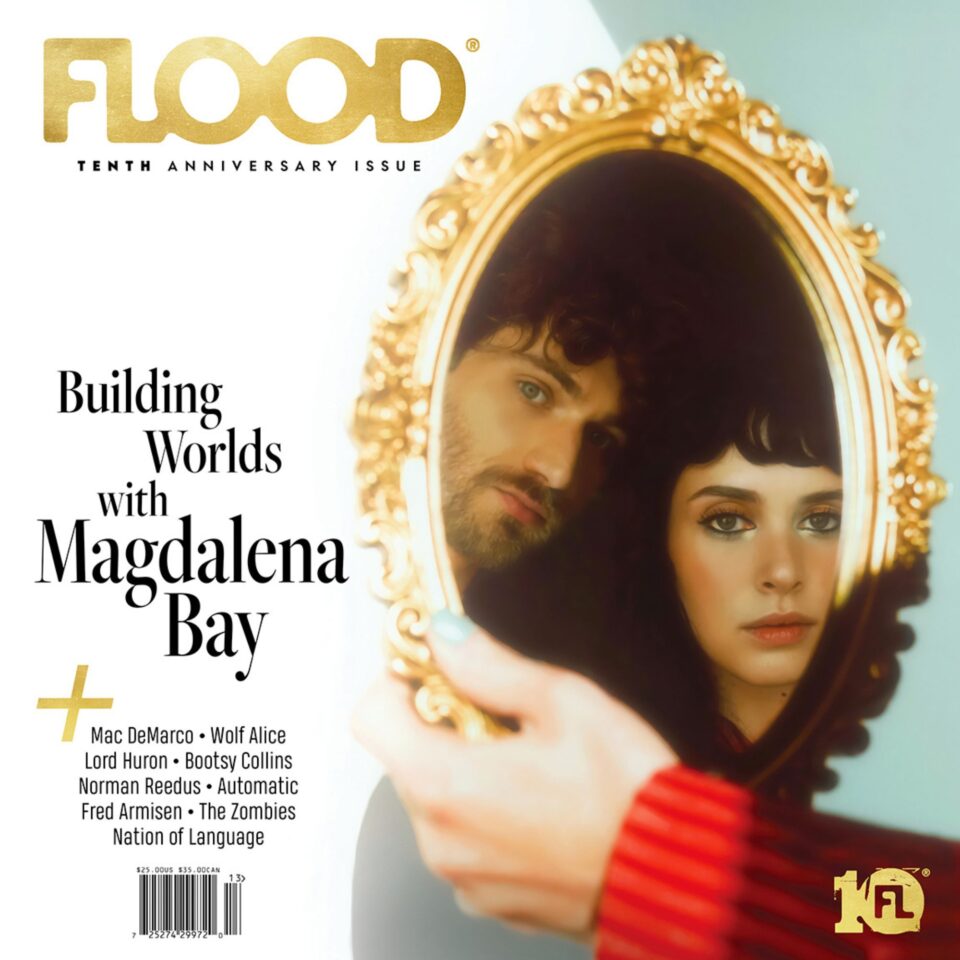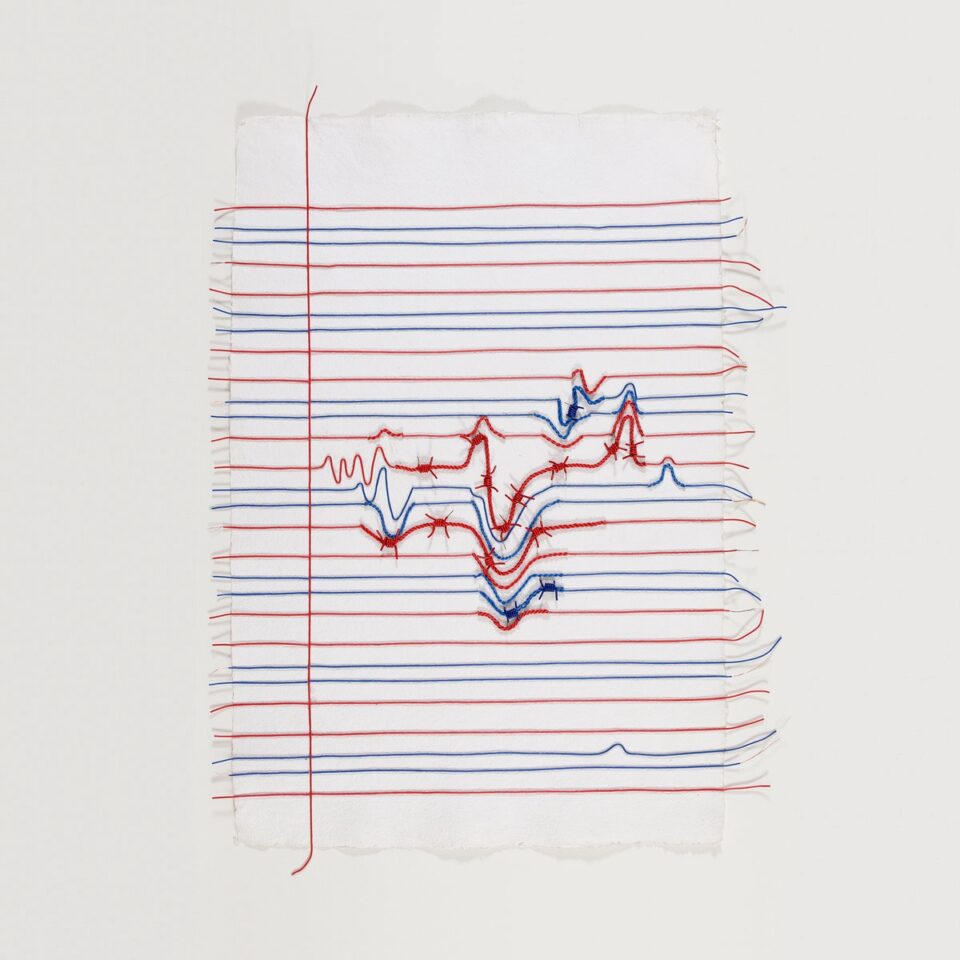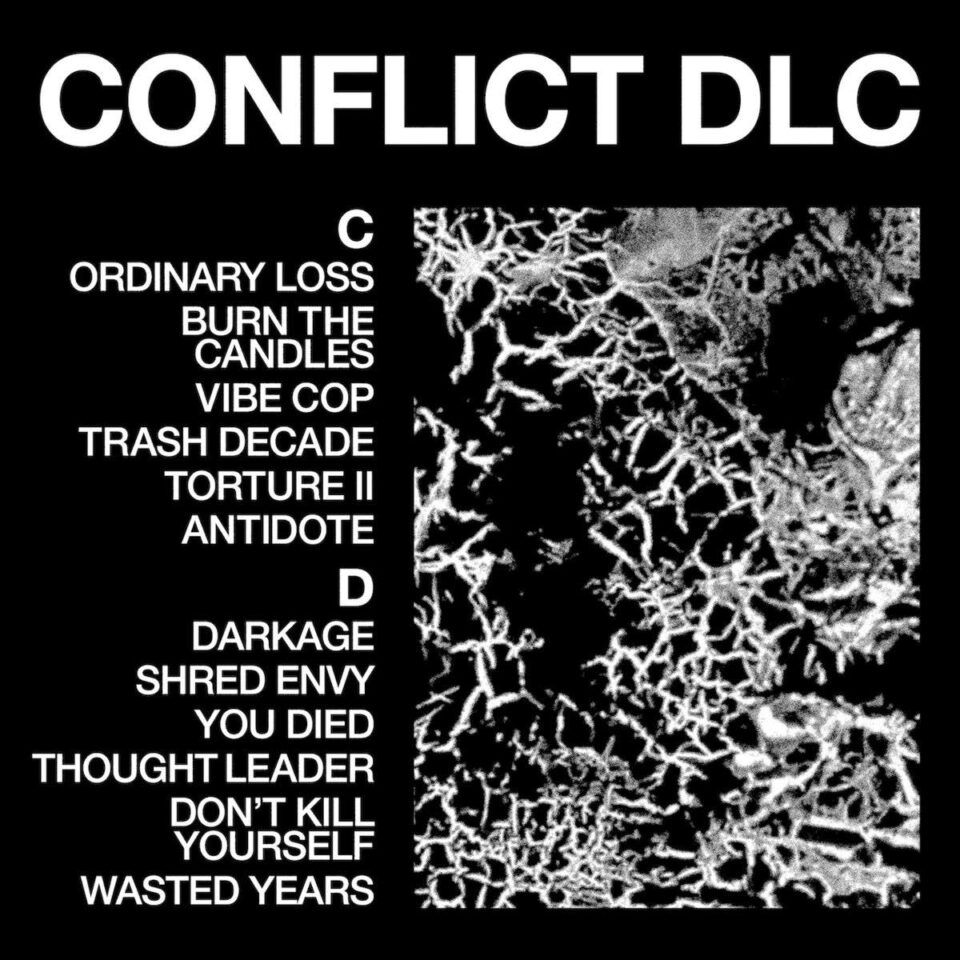“Everyone thinks it’s cute that we match,” says Millie (Alison Brie) to Tim (Dave Franco) in the second sequence of Together, following some revolting canine imagery. And so our arguably heavy-handed extended metaphor is born, with this initial subconscious mirroring at the couple’s going-away party quickly descending into physical manifestations of the gut-churning variety.
The film unfolds as our two leads swap out the concrete and smog of their present cityscape for a serene cottage in the woods. Millie’s new job teaching middle school has brought them to this quaint town, while Tim is a freelance guitarist who can’t drive. He’s a bit of a manchild, having doubts about commitment and having to abandon his dreams or whatever, and is unable to vocalize them in any discernible way. What unfolds is a variation on the “cabin in the woods” trope, only instead of a group of young, horny teenagers, we’ve got codependent 30-somethings staring down the barrel of indefinite monogamy. It’s love versus comfort, i.e., the horrors of prolonged fidelity.
Neither Brie nor Franco are strangers to the horror genre: Brie’s filmography includes Scream 4 and The Rental (the latter co-written and directed by Franco), whereas Franco appeared in Warm Bodies and the 2011 Fright Night remake. Brie is doing some superb work here, and Franco is a solid counterpart—a dynamic undoubtedly strengthened by their real-life nuptials (they married in 2017). At times, however, Franco's breathless, high-strung delivery can feel whiny, making him periodically frustrating to watch.
Save for a few moments of intermittent happenings, Together’s story is primarily confined to its two protagonists, Millie and Tim, meaning the cinematic success hinges entirely on the dynamic performances of its two leads. Damon Herriman also resonates as Jamie, Millie’s fellow teacher and neighbor, the only other substantial character aside from our tragic twosome. He’s mysterious but charming, and ultimately played with haunting subtlety. You may recognize Herriman from his roles as Charles Manson in both Once Upon a Time… in Hollywood and Mindhunter.
Together is Australian director Michael Shanks’ full-length directorial debut, and an overall impactful, impressive first film. He joins a formidable list of recent, innovative Australian prestige horror directors taking bold risks as well, including Jennifer Kent (The Babadook), the Philippou brothers (Talk to Me and Bring Her Back), and Natalie Erika James (Relic). Together’s release also capitalizes on the substantial momentum generated by the success of 2024’s body horror masterpiece The Substance. It seems only natural to lean into the revival, as the genre once again picks up steam with recent films like The Ugly Stepsister and Titane generating substantial buzz.
Shanks has a background in visual effects, music, and comedy, which are unsurprisingly three of the strongest elements of this film. In a recent interview, he mentioned, “One of my north stars as a filmmaker is to create visuals that I’ve never seen before and therefore an audience hasn’t seen before.” And so he does. As far as practical effects go, be on the lookout for a slack-jawed Franco munching on some gag-worthy fibrous material as well as an adhesive, shudder-inducing sex scene achieved with a faux-penis provided by Shanks’ partner, who was working for a sex toy company at the time. While 1982’s The Thing is a clear point of reference and inspiration in its use of practical effects and due to its central theme of isolation, I found Together elegant in its restraint. It’s funny but not campy, bloody but not too bloody; it’s simplistic in its story but resonant in its images.
Composer Cornel Wilczek also deserves some love for the film's atmosphere, distinct in its stunningly textured (and simultaneously fluid) soundscapes. His work is also featured on the aforementioned Aussie hits Talk to Me and Bring Her Back. As a musician, Shanks has spoken about the glissando motif he envisioned for this film, which sonically mirrors the bending and stretching of physical bodies performed on screen. “Our First Dance” is an incredible example of Wilczek’s ability to stretch, distort, and reshape sound in a way that supports but doesn’t outshine the film’s genetic makeup.
An area where the film falls a tad short for me is its reliance on a muddled and underdeveloped religious cult narrative. It’s a much-mined throughline in the horror genre, including recent films from Ari Aster and foundational touchstones like The Wicker Man and Rosemary’s Baby, though Together is pushed to the supernatural end of the spectrum, to be sure. The film’s premise, ostensibly drawn from Plato’s Symposium—a work derived from a philosophical male-only drinking party where love is discussed at length—is vague and undoubtedly echoes traditional Christian theology. We’re talking about the idea that “two become one,” as the Spice Girls sing at a memorable moment of metahumor in the film.
What unfolds is a variation on the “cabin in the woods” trope, only instead of a group of young, horny teenagers, we’ve got codependent 30-somethings staring down the barrel of indefinite monogamy.
In the rising action of the film, Millie and Tim are caught in a storm while hiking and plummet into a bizarre, otherworldly cavern. There, strange, cursed (?) cave water seals their terrifying fate of coalescence. The viewer gradually learns a few details regarding the cave and its affiliated cult, but the context isn’t expanded upon in a way that warrants deeper understanding (maybe the inevitable figurative enmeshment of matrimony or a long-term relationship is literal enough?). One thing’s for sure: we all know that couple, the one the whole group thinks should break up, but they’re in too deep to get out now. For that reason, I can’t tell if I’m rooting for or against the film’s subjects, but I’m also not sure that matters. The chemistry between Brie and Franco is playful and palpable, but their decision-making skills can also be emotionally infantile.
Tim’s parents are another point of contention. Without spoiling any specifics, there is some death and some mental illness, though never interrogated or expanded on in any meaningful way. While Tim’s flashbacks and apparitions echo Dani’s haunting visions in Midsommar, they lack the same psychological weight and are ultimately reduced to a mere plot device. Between this and the vague cult references (they surely love bells), the plot is so straightforward I almost felt like I was missing something.
I have to admit, this film initially gave me pause for two unsubstantiated reasons: (1) What seemed to me an overly eager celebrity couple at its marketing center, and (2) The copyright infringement lawsuit, which alleges that Together is a “blatant rip-off” of Better Half, an indie film released in 2023. As for the film’s first offense, I believe I’m slightly traumatized from the Ryan Reynolds and Blake Lively of it all. In retrospect, Brie and Franco just seem genuinely excited about their little movie that could, and did (it reportedly sold to distributor NEON for $17 million after its run at Sundance earlier this year). As for the latter, the premise of Better Half appears similar, and I’m interested to follow the inevitable public discourse and spirited debates.
All in all, despite its straightforward premise, the film is a surprising success that subverts expectations in hilariously inventive ways. Additionally, kudos to NEON’s viral marketing campaign, which includes a lip-biting billboard on Melrose, an all-expenses-paid Las Vegas wedding, couples therapy, and even human hair floss; it doesn’t get much better.







